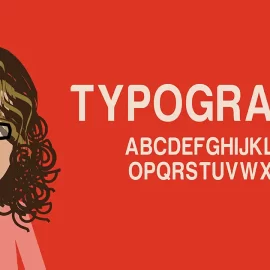
Web Designers – How to Educate Your Clients
As a web designer, it’s important to remember that your clients are the heart and soul of your business. The type of clients that you choose to work with says a lot about you, and likewise, the fact that they’ve chosen to work with you says a lot about them.
Maintaining a great relationship with clients is tricky though and a lot of it revolves around your ability as a web designers to educate your clients and set expectations so that both sides end up feeling satisfied at the end of a project.
Educating your clients isn’t hard, but it’s a hugely important part of any project and it’ll help improve the working relationship that you have with your clients.
When does education happen?
Before you sign the contract! It would be easy to say that education happens all the time during a web project. While that may be the case, if you haven’t set expectations properly upfront, you are going to have problems later on.
Most of the lessons below should actually be written in some way inside a contract and reviewed before the project actually begins. Doing so, will ensure that both sides of the agreement understand the timeline, budget, scope, and more importantly, the nature of the project that you’re about to begin.
Below is a general list of some important lessons that should give you a framework for the education process.
Lesson #1: You are a creative professional and not a labourer
The first lesson is to make your client understand that you are a creative professional with the same talent, skills and experience that any other professional might have.
Most people don’t tell their doctors or electricians how to do their jobs. Why? Because most people recognise that doctors and electricians know more about their respective trades than they do.
However, this seems to change with web designers. Lots of clients think that simply surfing the web qualifies them to make design decisions, meaning that they usually treat web designers as extensions of their own minds.
Because of this false perception, clients often take creative professionals are labourers, who are hired to do their work, and not experienced professionals that are an equal part of the design process.
This is the case, especially with freelance web designers, where most clients are of the mindset that if you don’t have an office, it means that you don’t have any work hours. For these kinds of clients, educating them that you have set times of the day that you work, is the first step in establishing a respectful work relationship.
Make it a point to tell your new and existing clients that you are a professional, the same as they are, and that you need time for yourself, your family and all other things in the world.
Lesson #2: You know the web better than they do
This lesson sounds harsh when spoken out loud, so it’s advisable that you don’t just come out and say this one at the start of each meeting.
The idea behind this lesson is this. Before a project begins, it’s important to establish that you are an expert and that your opinion is grounded in research and professional experience. Why? Because many clients just assume that because they’ve opened up Photoshop or made a flyer with Microsoft Word, that they are designers in their own right. However, this is actually a common misconception.
So establishing your own credibility is important to getting them to understand that there is more than just a “gut feeling” behind your decisions. How do you do this without sounding like a jerk?
Here’s just a few ideas:
- Don’t just show your comps, walk your clients through each major decision. Sometimes, simply hearing the rational behind a design decision is enough to remind them that you’re the expert.
- When it is available, show research or data that support your decisions.
- Show examples of other successful websites that are using a certain technique that you’re also using.
- Cite usability books, design principles or other academic sources in your discussions
There are other practical things that can help to establish your credibility, like:
- Show up to meetings on time
- Dress appropriately
- Meet your deadlines
- Be organised
- Write professional emails
Lesson #3: Communication is crucial
Lack of communication and miscommunications can often destroy an entire project. As a web designer, you don’t have a crystal ball to read your clients’ minds, so explaining the importance of their feedback and involvement at each step of the project is vital.
This is a unique problem for web designers. Many clients tend to be very involved and vocal at the start of a project, but can become distant and increasingly quiet during the middle stages of a project. This leads designers to believe that everything is going well, until the end of a project, when the client shows up with a laundry list of edits.
So, explaining at the start of a project (and even writing this out in the contract) that you will need regular communication from the client’s end during the entire design process is important.
From an issue as large as payment or billings to a matter as small as colour combinations of the website, regular communication between the designer and the client will help produce a better product within limited time.
Lesson #4: The web is a different medium than print
Some clients, especially the ones who are going through the web designing process for the first time, are unable to differentiate between print medium and the web. You might encounter this a lot with older clients, who are familiar with print advertising but are just now venturing into the web.
Web designers take for granted that their entire lives have probably been spent surfing the web, but it’s important to remember that there is a very large segment of the population for which the web is still a strange and foreign place. So taking the time to educate these clients on the subtleties of the web will help dispel any false illusions that they might have.
There are also the clients who want to make (rather force) their website look like a brochure of their product or service. Being an expert in the field, it’s your responsibility to inform your clients that although the website can be made like a brochure, doing so will often fail to tap the real power of the internet, which will ultimately set them up for failure on the web.
Lesson #5: Feedback is invited but impositions are not
This lesson is subtle, but it’s one that can leave web designers frustrated with their clients, if they don’t bother to teach it.
Teaching your clients that they can provide feedback is great. However, there is a difference between having an open line of communication with a client, and that client feeling as though their voice commands your mouse and keyboard. The moment a client begins micromanaging a design, it’s probably worth having a chat with them over whether they just want to take over the project themselves.
How do you teach this lesson? Honestly, this one is difficult to put into writing because it’s more of an attitude problem than a practical issue. Most clients won’t get this way, unless they feel like you’re incompetent or otherwise failing to understand their project.
Taking the time early on in a project to really listen and ask questions about what a client is looking for in a website, can help avoid the need to teach this lesson at all.
Lesson #6: There is no such thing as “one small final change”
One of the worst habits of web design clients is to ask for last minute changes, no matter how major or minor they are.
To the client, changing the colour from red to black might seem a minor job. However, what they don’t know is that you might have to go back to the source file, export all the slices, modify the style sheet, modify some other details to complement the new colour, and the list goes on.
At this point, you need to make your client understand that there is no such a thing as “one small change” and that they should finalise everything once and for all, before the actual product gets public.
How do you teach this lesson? Easy! Just write out your revision rules in the contract. Explain them in detail before both parties sign the contract, and when problems arise later on, invite them to go back and read what they signed.
Make it very clear when revisions and change requests are allowed and stick to your rules. It can even be helpful to build in-costs associated with requests made after a certain date, just to help reinforce the lesson.
Lesson #7: Set reasonable deadlines
Every client in the world wants their website done “as soon as possible”. The problem that most web designers have is in:
- setting deadlines that they can actually meet and
- explaining these deadlines to their clients
Whenever you make a time estimate for a website, take at least an hour or two to go through each step of the project and attach a time estimate (i.e. design phase 1 = 3 days). Then, when you’re all done, add everything up and triple it. The simple fact is that you can always work faster (clients will be excited if you finish early), but the moment you run into a problem, delay or life emergency, your clients are going to be seriously frustrated if you can’t meet your deadlines.
Next, take the time to set project milestones and explain each one to your clients. Explaining why you set the project milestones the way that you did can even help to educate clients about what it is that you’re doing at each step in the project, which should help with any communication problems as well.
Lesson #8: The terms in your contract are meant to be followed
This last lesson is one that lots of web designers simply overlook. Having a detailed contract can be the single most important educational tool at your disposal. A well-written contract will inform your clients as to your:
- requirements for feedback
- reasonable work hours
- licensing rules (who owns what at the end of a project)
- project milestones
- the budget (and the cost of overtime requests)
- payment rules
and anything else you want to remind your client before you make a final agreement.
Conclusion
One of the main challenges for any service-oriented business is to learn to manage clients successfully. Educating clients has always been the wisest way to maintain good working relationships.
Web designing, being an integral part of the service industry, follows the same rules. Standing up to your client or boss is one of the hardest things you will ever have to do, but it is something you should be doing regularly, in order to turn the web designing process into a pleasant experience for yourself and for your client.
SOURCE: Webdesigntuts+



